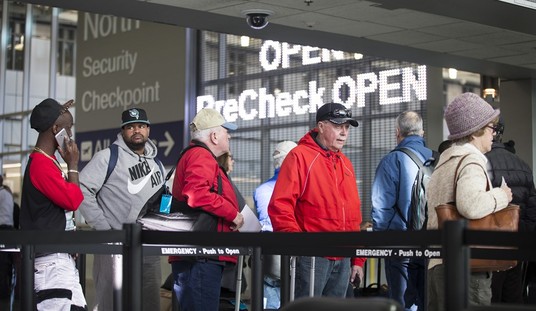When a jury found Jose Ines Garcia Zarate not guilty for murdering Kate Steinle, many were outraged. Emotions ran high.
As I wrote here at RedState the evening of the verdict, much of that outrage could be traced to misinformation that had been shared about the case, and the not guilty verdict was due to the actual facts of the shooting and the prosecution’s strategy, not some liberal San Francisco jury hellbent on giving an illegal immigrant a pass.
Now, an alternate juror who sat through the entire trial, including viewing all the evidence and hearing the jury instructions, has come forward to affirm the correctness of the jury’s decision, highlighting even more details from the case.
As I had previously discussed, the prosecution chose to focus on a first degree murder theory of the case, which required proving that Garcia Zarate killed Steinle intentionally and with premeditation. This made it easier for the defense to present their own theory that the shooting was an accident, which the prosecution apparently failed to adequately counter. The simple fact that the fatal shot had been a ricochet off the concrete ground surface of the pier, and not a direct hit, made it much harder to argue that it was done intentionally.
The alternate juror, Phil Van Stockum, shared his story in an article for Politico, and began by discussing the presumption of innocence to which all defendants are entitled. “Defendants in this country have the right to a presumption of innocence, which means that if there is a reasonable interpretation of the evidence that favors a defendant, the jury must accept that interpretation over any others that incriminate him,” he wrote.
Van Stockum highlighted several facts that he says helped support the jury’s conclusion:
These are some of the facts that were laid out to us: Zarate had no motive and no recorded history of violence. The shot he fired from his chair hit the ground 12 feet in front of him before ricocheting a further 78 feet to hit Steinle. The damage to the bullet indicated a glancing impact during the ricochet, so it seems to have been shot from a low height. The gun, a Sig Sauer P239 pistol, is a backup emergency weapon used by law enforcement that has a light trigger mode and no safety. (The jury members asked to feel the trigger pull of the gun during deliberation, but the judge wouldn’t allow it, for reasons that aren’t clear to us.) The pixelated video footage of the incident that we were shown, taken from the adjacent pier, shows a group of six people spending half an hour at that same chair setting down and picking up objects a mere 30 minutes before Garcia Zarate arrived there.
The bullet hit the ground and then ricocheted an additional 78 feet? Even the best trained marksman can’t guarantee that shot. Again, the trajectory of the bullet on its own made it tougher for the prosecution to convince the jury the shooting was intentional.
It was no surprise that the defense was going to argue that it was an accidental shooting, and the defense counsel had even laid out their research on the gun’s firing mechanism, past reported involvement in accidental shootings, etc. in an article published back in July.
So are SIG Sauer P239 pistols as prone to accidental shootings as the defense argued? This was a major point of contention on Twitter from people who read my previous article, many of whom seemed to miss the fact that I was quoting the defense counsel, not arguing that point myself. I digress, but the point is, you don’t have to believe that SIG Sauers are actually as unreliable as the defense claimed in order to believe that the jury’s decision was reasonable. You just have to believe that the defense made this argument and the prosecution failed to adequately counter it.
As Van Stockum wrote:
There is a reasonable interpretation here that favors the defendant: He found the gun at the seat, picked it up out of curiosity, and accidentally caused it to fire. As a scared, homeless man wanted by immigration enforcement, he threw the gun in the water and walked away. The presumption of innocence, as stated in the jury instructions, required the jury to select this interpretation because it is reasonable and favors the defendant.
But what about the lesser included charge of involuntary manslaughter? According to Van Stockum, blame rests squarely on the prosecutors’ strategy. Based on the instructions given to the jury, the prosecutors completely failed to establish one of the necessary elements of the crime:
The involuntary manslaughter charge that the jury was read included two key requirements: 1) A crime was committed in the act that caused death; 2) The defendant acted with “criminal negligence”—he did something that an ordinary person would have known was likely to lead to someone’s death.
The jury members were not free to select the crime for part (1)—they had to use the one chosen by the prosecution, and the prosecution chose that crime to be the “brandishing,” or waving with menace, of a weapon. As a juror, I found this choice puzzling, because the prosecutor presented absolutely zero evidence of brandishing during the trial. I don’t think we even heard the word “brandishing” until it was read as part of the charge during the jury instructions at the trial’s end. No witnesses ever saw the defendant holding a gun, much less brandishing it. Given that baffling choice by the prosecution, the manslaughter charge was a nonstarter for the jury. Had a different precursor crime been chosen—for instance, the unlawful possession of a firearm by a felon—the outcome might have been different.
Even in that case, however, it is not clear to me that part (2) of the manslaughter charge was proved. Only a single particle of gunshot residue was found on the defendant’s hands, which seems to support his repeated claim that the gun was wrapped in some sort of fabric when he picked it up and caused it to fire. If he did not know the object was a gun, it is a stretch to claim that it was criminal negligence for him to pick it up.
Again, the prosecution argued that Garcia Zarate had “brandished” the weapon, but offered “absolutely zero evidence of brandishing during the trial.”
If a jury is doing its job correctly, they will not reach a legal conclusion that lacks support from evidence presented in the trial itself. That’s why jurors are questioned about prior knowledge of a case, including media reports. They are supposed to base their decision solely on evidence that is properly and legally submitted in that courtroom, and nothing else from outside those walls.
Based on the evidence presented to these jurors, they were not unreasonable to decide that Garcia Zarate had fired the gun accidentally. The prosecution offered them no way to reasonably reach another conclusion.
“I have come away from this experience with a strong sense of respect for the jurors and their objective handling of a sensitive case under the national spotlight,” concluded Van Stockum. I agree.
Further reading: Have We Been Lied to About the Kate Steinle Case?
Follow Sarah Rumpf on Twitter: @rumpfshaker.













Join the conversation as a VIP Member